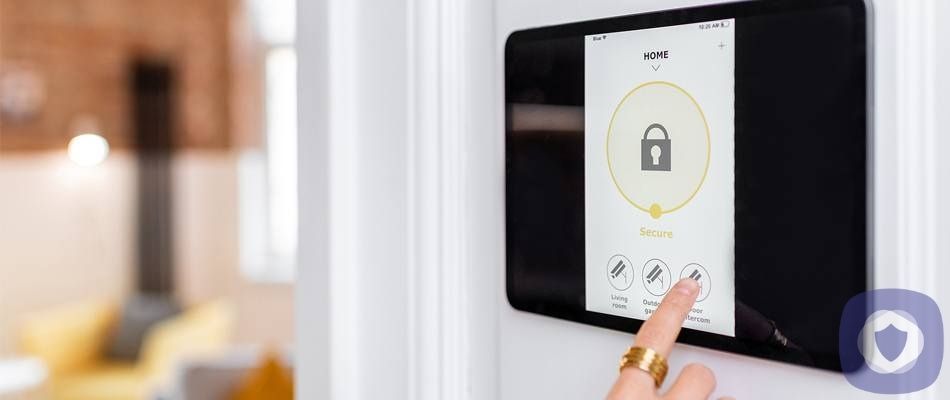Creating your own smart home from scratch can be a dizzying experience. There are so many new technologies to add to a smart ecosystem, but you also want to make sure they can all talk with each other. Two of the most popular wireless communication technologies used for home automation are Z-Wave and ZigBee.
While both are incredibly reliable and popular, there are some differences you should know about before choosing the right one for your home. We’ll cover how Z-Wave and ZigBee work and help you to figure out which will serve you best.
Mesh networks: How do they work?
Even if you’re just getting started learning about the home automation game, you’re probably familiar with a hub. It’s the central device that talks to and controls all the other products in the network. However, both Z-Wave and Zigbee operate on mesh networks, which means each device can talk to each other without needing the hub as the middleman.
Z-Wave and ZigBee devices can perform what’s called “hopping.” That’s when one device talks to another, skipping over the need to communicate with the main hub. One advantage to a mesh network means each connected product acts as a repeater, increasing the distance required between your smart home products.
Similarities between Z-Wave and ZigBee
In many ways, Z-Wave and ZigBee products are similar in how they operate and perform. Here are some of similarities between the two technologies:
- Mesh network: Both Z-Wave and ZigBee utilize this network instead of Wi-Fi, which has multiple advantages allowing products to act as repeaters, rather than working through one central hub.
- Power requirements: Z-Wave and ZigBee don’t need as much power to operate when compared to Wi-Fi. This means long battery life for these types of products, making them more user-friendly for most renters and homeowners.
- Reliability: Both Z-Wave and ZigBee are considered incredibly reliable. Z-Wave tends to have a bit more range than ZigBee products, but both in general are considered dependable.
- Encryption standards: Both Z-Wave and ZigBee use the same encryption standards as banks: AES 128. This makes it incredibly difficult for hackers to access any of your systems, keeping your home ecosystem safe from threats.
Differences between Z-Wave and ZigBee
While there are key similarities between the two technologies, there are also a few differences you should know about before deciding on which one is best for your home’s smart ecosystem.
- Interoperability: It’s not a word the average DIYer would know, but it’s an important distinction between Z-Wave and ZigBee products. Z-Wave has a stringent certification process, which means every piece of Z-Wave hardware and software sold has full compliance with the Z-Wave Alliance, which means they will work together giving the consumer a seamless experience. ZigBee’s certification process is less rigorous, which means it’s possible to buy a company’s hardware that is ZigBee certified, while its software is not. Although this doesn’t appear to be a widespread issue, it’s something to note when purchasing any ZigBee product.
- Frequency: Z-Wave and ZigBee operate at different frequencies, which can have an impact on signal range in your home. ZigBee operates at 2.4 GHz, while Z-Wave has a lower 908 MHz range. So what does this mean for your smart home? The higher the frequency, the lower the range of the signal. While ZigBee may have a higher frequency, it may provide interference within your home and reduces the range in-home to about 40 feet. Z-Wave’s lower frequency signal allows for more than double the range of a ZigBee device, which may be important if you have a larger home.
- Configuration limits: Both Z-Wave and ZigBee are mesh networks, which means each device can act as a repeater and does not need to go through the main hub to work properly. When one device talks to another to reach the intended goal of the user, it’s called “hopping.” Z-Wave allows for up to 4 “hops,” while Zigbee has unlimited capabilities in that area. This will only make a huge difference for business owners, and generally shouldn’t have much of an impact in a residential home.
- Supported devices: This likely won’t make a difference for any homeowner, but ZigBee can support up to 65,000 devices, while Z-Wave can support up to 232. While ZigBee clearly wins in this department, it’s unlikely you will even get anywhere near Z-Wave’s maximum capacity anyway.
Products that Use Z-Wave and ZigBee
Some products you can purchase for your smart home use both Z-Wave and Zigbee, while others utilize just one or the other. Here are some popular security products that use both Z-Wave and ZigBee technologies.
- Z-Wave and ZigBee: Abode, SmartThings, GE, Honeywell
- Z-Wave: Kwikset smart locks, August Smart locks, ADT Pulse, First Alert Detectors, Vivint Security
- ZigBee: Bosch Security, Amazon Echo Plus, Phillips Hue lighting, Yale Smart Locks
Z-Wave vs. ZigBee: Wrapping Up
Both Z-Wave and ZigBee are ideal choices for your home automation setup, whether you’re a beginner or a seasoned techie. They use little power, but provide a secure way to create the exact setup you’re looking for in your home’s ecosystem.
Sometimes, you may not need to decide between the two, as there are products that utilize both technologies. However, in other cases, you should decide between Z-Wave and ZigBee by examining which factors will work best within your home.
Make sure to figure out the range you’ll need between devices in your space, what is compatible with the hub you plan to use and how many devices you plan to utilize. No matter which “Z” technology you spring for, you can’t go wrong with these reliable technologies that bring an extra layer of convenience and safety to one’s home.
This article has been reviewed and approved by Officer Banta.

Officer Banta is the official SecurityNerd home security and safety expert. A member of the Biloxi Police Department for over 24 years, Officer Banta reviews all articles before lending his stamp of approval. Click here for more information on Officer Banta and the rest of our team.

